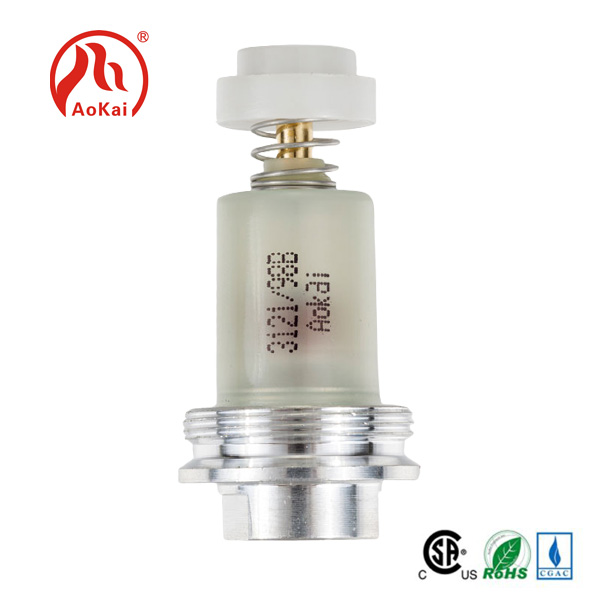Why Are Solenoid Valves the Backbone of Modern Fluid Control Systems?
2025-08-05
In the intricate web of industrial automation, one component quietly ensures the smooth flow of operations across countless sectors: the solenoid valve. These electromechanical devices have become indispensable in regulating the flow of liquids, gases, and steam in applications ranging from household appliances to large-scale manufacturing plants. But what sets them apart as the cornerstone of fluid control systems? This comprehensive guide will delve into the functionality, applications, and advancements of solenoid valves, explaining why they are irreplaceable in modern engineering and automation.
Top News Headlines: Trending Developments in Solenoid Valve Technology
- "Low-Power Solenoid Valves Cut Energy Use in Commercial HVAC"
- "High-Pressure Solenoid Valves Enhance Oil & Gas Drilling Safety"
- "Sanitary Solenoid Valves Meet New FDA Standards for Food Processing"
- "Smart Solenoid Valves with IoT Integration Reduce Factory Downtime"
Understanding Solenoid Valves: How They Power Fluid Control
Working Principle
At the heart of a solenoid valve lies a simple yet effective mechanism. When an electric current is applied to the solenoid (a coil of wire), it generates a magnetic field that attracts a plunger or armature. This movement opens or closes the valve, controlling the flow of the medium through the valve body. When the current is switched off, the magnetic field dissipates, and a spring returns the plunger to its original position, reversing the valve's state.
This rapid response to electrical signals—often in milliseconds—makes solenoid valves ideal for applications requiring precise, on-demand flow control. Unlike manual or pneumatic valves, they can be easily integrated into automated systems, allowing for remote operation and seamless synchronization with other machinery.
Key Advantages
Solenoid valves have earned their place as a staple in fluid control due to several critical benefits:
- Fast Response Time: They can switch from open to closed (or vice versa) in a fraction of a second, making them perfect for applications where timing is crucial, such as in medical equipment or fuel injection systems.
- High Reliability: With fewer moving parts compared to mechanical valves, solenoid valves experience less wear and tear, ensuring consistent performance over extended periods.
- Energy Efficiency: Modern solenoid valves are designed to operate on low power, reducing energy consumption without compromising functionality—a key factor in sustainable industrial practices.
- Versatility: They can handle a wide range of media, including water, air, oil, and corrosive chemicals, and are available in various sizes to suit different flow rates and pressure requirements.
- Easy Integration: Compatible with digital control systems, solenoid valves enable precise automation, data logging, and remote monitoring, enhancing operational efficiency.
- Direct-Acting Solenoid Valves: These valves use the solenoid's magnetic force to directly lift the plunger, making them suitable for low-pressure applications (up to 16 bar). They are commonly found in water dispensers, small appliances, and pilot control systems.
- Pilot-Operated Solenoid Valves: These rely on the pressure of the medium to assist in opening or closing the valve, allowing them to handle higher pressures (up to 100 bar) and larger flow rates. They are ideal for industrial water systems, irrigation, and hydraulic power units.
- 2-Way and 3-Way Solenoid Valves: 2-way valves control flow between two ports (inlet and outlet), while 3-way valves direct flow between a common port and two other ports. 3-way valves are frequently used in heating systems, pneumatic controls, and chemical mixing processes.
- Normally Open (NO) and Normally Closed (NC) Valves: NO valves remain open when de-energized and close when energized, while NC valves do the opposite. NC valves are preferred in safety-critical applications, such as gas shutoff systems, where failure should result in a closed state.
Product Specifications: High-Quality Solenoid Valve Parameters
|
Parameter
|
Direct-Acting (2-Way)
|
Pilot-Operated (2-Way)
|
3-Way (Mixing/Diverting)
|
|
Operating Pressure Range
|
0–16 bar
|
0.5–100 bar
|
0–25 bar
|
|
Media Compatibility
|
Water, air, oil, inert gases
|
Water, steam, fuel oils
|
Water, hydraulic fluids, mild chemicals
|
|
Temperature Range
|
-10°C to 80°C
|
-5°C to 120°C
|
-10°C to 90°C
|
|
Voltage Options
|
12V DC, 24V DC, 110V AC, 220V AC
|
12V DC, 24V DC, 110V AC, 220V AC
|
24V DC, 110V AC, 220V AC
|
|
Response Time
|
≤50ms
|
≤100ms
|
≤70ms
|
|
Body Material
|
Brass, Stainless Steel 304
|
Cast Iron, Stainless Steel 316
|
Brass, Stainless Steel 304
|
|
Port Size
|
1/8" to 1"
|
1/2" to 4"
|
1/4" to 2"
|
|
Seal Material
|
NBR, EPDM, Viton
|
NBR, EPDM, PTFE
|
NBR, EPDM
|
FAQ: Essential Solenoid Valve Questions Answered
Q: How do I select the right solenoid valve for my application?
A: To select the correct solenoid valve, consider the following factors: 1) The type of media (liquid, gas, corrosive, etc.)—this determines the body and seal materials. 2) Operating pressure and flow rate—direct-acting valves work for low pressures, while pilot-operated valves handle higher pressures. 3) Voltage availability (AC or DC) to match your power supply. 4) Temperature range of the media, as seals and materials must withstand specific temperatures. 5) Valve function (normally open/closed, 2-way/3-way) based on your system’s operational needs. Consulting with a technical expert can help ensure compatibility with your specific application.
Q: What maintenance is required for solenoid valves, and how often?



